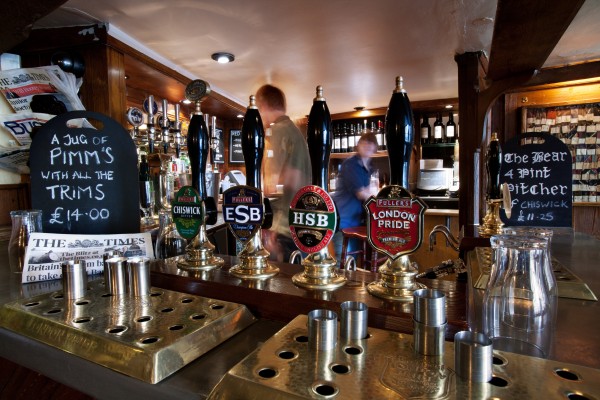 Pubs are closing down in the UK at the rate of 29 per week. The total number has fallen from 67,000 in 1982 to approximately 52,000 this year. In response to this decline the government has recently announced some changes to the way the relationship between pub owners and their tenants are regulated.
Pubs are closing down in the UK at the rate of 29 per week. The total number has fallen from 67,000 in 1982 to approximately 52,000 this year. In response to this decline the government has recently announced some changes to the way the relationship between pub owners and their tenants are regulated.
The ownership of pubs in the UK changed dramatically after a report on the beer market was published by the Monopolies and Mergers Commission (MMC) in 1989. When this investigation took place over 75% of the beer in the UK was produced by the six largest brewing businesses (Bass, Allied Lyons, Grand Metropolitan, Whitbread, Scottish and Newcastle, Courage) which owned over half the pubs. The nature of the relationship between these breweries and the landlords of the pubs they owned caused the greatest concerns.
Some pubs are run as managed houses. In this type of business relationship the person who manages and runs the pub (the publican) is a direct employee of the brewery. However, in many instances this is not the case. Instead they are independent entrepreneurs who enter into a tenancy agreement with the owner of the pub. In other words they rent the pub from the brewery and have some freedom over the way it is run including the setting of prices.
These arrangements have proved to be very controversial because of one particular aspect of many of the tenancy agreements – the exclusive supply contract. Known as the ‘tied lease model’, ‘beer tie’ or ‘wet rent’, it significantly reduces the freedom of publicans to run the business, as they have to purchase almost all their beverages from the brewery that owns the pub.
The MMC report in 1989 concluded that a significant reason for the increasing real price of beer was the market power exerted by the brewers through the tied lease model. It recommended that the number of pubs owned and operated by the brewers should be substantially reduced. Known as the ‘Beer Orders’, the brewers responded by gradually selling off 14,000 pubs. They also eventually sold the breweries to international rivals and companies such as Whitbread and Bass moved into the retail, leisure and hotel sectors. Whitbread currently owns Costa, Brewers Fayre and Premier Inn hotels while Bass, renamed Intercontinental Hotels Groups, owns both Crown Plaza and Holiday Inn hotels.
 The beer tie between the pubs and the big national breweries might have disappeared but the tied lease arrangement still exists. Instead of being tied to national brewers, many publicans are tied to either smaller regional breweries, such as Everards and Adnams, or another type of business – the pub company known as ‘pubcos’. Some of the larger pubcos include Enterprise Inns, Punch Taverns, Mitchells&Butlers and JD Weatherspoon. They negotiate deals with the breweries and then supply the beer to their pubs.
The beer tie between the pubs and the big national breweries might have disappeared but the tied lease arrangement still exists. Instead of being tied to national brewers, many publicans are tied to either smaller regional breweries, such as Everards and Adnams, or another type of business – the pub company known as ‘pubcos’. Some of the larger pubcos include Enterprise Inns, Punch Taverns, Mitchells&Butlers and JD Weatherspoon. They negotiate deals with the breweries and then supply the beer to their pubs.
In 2014, The British Beer and Pub Association estimated that two-fifths of pubs in the UK were owned by pubcos, while another fifth were owned by regional breweries. In 2013, The Department for Business, Innovation and Skills estimated that 48 per cent of pubs in the UK had landlords who were tied to either a regional brewer or a pub company.
The ownership of pubs may have changed radically over the past 20 years but the tied lease system continues to be extremely controversial. The main argument against the system is that it leads to tied publicans having to pay significantly above free market prices for their beer. The pubcos accept this claim but maintain that, in return for being in a tied lease, the publican pays a lower rent and receives business support services.
Parliament passed the Small Business, Enterprise and Employment Act in March 2015 (see Part 4). This included provisions for the introduction of:
|
|
| • |
a statutory Pubs Code to govern the relationship between the businesses that own the pubs and their tenants; |
| • |
a new independent Adjudicator to enforce the code; |
| • |
a Market Rent Only (MRO) option. |
In October 2015 the government announced some proposals for how the MRO option could be implemented as part of its consultation process with the industry. These include giving the tied publican the right to ask for a rent assessment every five years or whenever the owner of the pub significantly changes the beer prices it charges the tenant. As part of this rent assessment the publican can take the option to switch to an MRO contract. This gives them the freedom to purchase beer from any supplier rather than being tied to those supplied by the owner of the pub.
Enterprise Inns, the largest pubco, operates nearly all of its pubs on the tied lease model. In response to the changes proposed by the Government, the company has announced plans significantly to increase the number of its directly managed pubs from just 16 to 800.
Could the tied lease system finally be about to end?
Articles
Enterprise Inns to grow pub numbers after death of the ‘beer tie’ The Telegraph, Ben Martin, and Peter Spence (12/05/15)
What is the ‘beer tie’ The Telegraph, Denise Roland (19/11/14)
Q&A: Calling time on the beer tie BBC News, Katie Hope (19/11/14)
Chin chin! Fair deal for pub tenants under a new beer tie crackdown City AM, Suzie Neuwirth (29/10/15)
Industry Reacts to New Statutory Pubs Code Eat Out, Nathan Pearce (29/10/15)
What does new pub code mean for the leased pubs? Burton Mail, Andrew Musgrove (04/11/15)
Questions
- What has happened to the big six national brewers which once dominated the beer industry in the UK?
- What factors have caused the decline in the number of pubs?
- Using a diagram, illustrate the impact that the market power of the pubcos might have on the prices paid by publicans in a tied lease.
- Discuss some of the potential advantages of the tied lease model.
- The global brewers and pubcos might create a situation where market power exists in successive stages of the vertical supply chain. Analyse some of the potential implications of this structure and discuss the concept of double marginalisation.
 There have been a number of recent developments in communications markets that may significantly alter the competitive landscape. First, the UK Competition and Markets Authority (CMA) has provisionally cleared BT to takeover the EE mobile phone network. The deal will allow BT to re-establish itself as a mobile network provider, having previously owned O2 until it was sold in 2005. The CMA said that:
There have been a number of recent developments in communications markets that may significantly alter the competitive landscape. First, the UK Competition and Markets Authority (CMA) has provisionally cleared BT to takeover the EE mobile phone network. The deal will allow BT to re-establish itself as a mobile network provider, having previously owned O2 until it was sold in 2005. The CMA said that:
They operate largely in separate areas with BT strong in supplying fixed communications services (voice, broadband and pay TV), EE strong in supplying mobile communications services, and limited overlap between them in both categories of service.
BT will therefore be in a better position to compete with rivals such as Virgin Media who were early movers in offering. 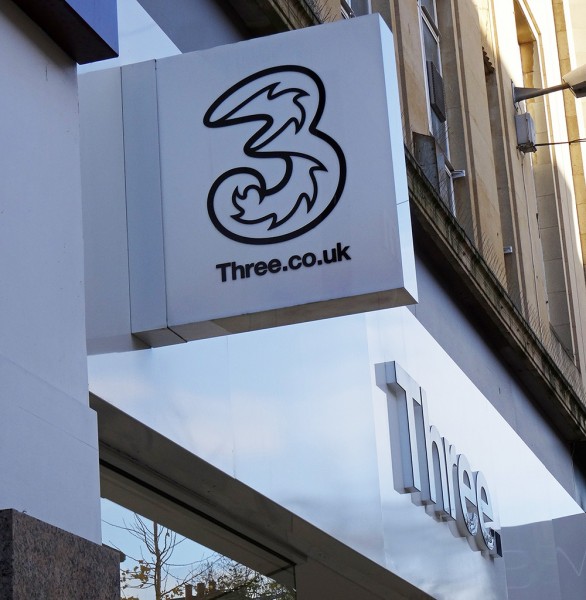 Second, O2 itself (currently owned by Telefónica) is the subject of a takeover bid from Hutchinson Whampoa who already owns the mobile network Three. Because the companies meet their turnover criteria, this deal is being investigated by the European Commission (EC) and the signs don’t look good. If it goes ahead, it would create the largest mobile operator in the UK and leave just three main players in the market. The EC is concerned that the merger would lead to higher prices, reduced innovation and lower investment in networks. Previously, considerable consolidation in telecommunications markets across Europe has been allowed. However, recent evidence, including the prevention of a similar deal in Denmark, suggests the EC is starting to take a tougher stance.
Second, O2 itself (currently owned by Telefónica) is the subject of a takeover bid from Hutchinson Whampoa who already owns the mobile network Three. Because the companies meet their turnover criteria, this deal is being investigated by the European Commission (EC) and the signs don’t look good. If it goes ahead, it would create the largest mobile operator in the UK and leave just three main players in the market. The EC is concerned that the merger would lead to higher prices, reduced innovation and lower investment in networks. Previously, considerable consolidation in telecommunications markets across Europe has been allowed. However, recent evidence, including the prevention of a similar deal in Denmark, suggests the EC is starting to take a tougher stance.
If we compare the two proposed takeovers, it is clear that the O2–Three merger raises more concerns for the mobile communications market because they are both already established network providers.  However, it is increasingly questionable whether looking at this market in isolation is appropriate. As communication services become increasingly intertwined and quad-play competition becomes more prevalent, a wider perspective becomes more appropriate. Once this is taken, the BT–EE deal may raise different, but still important, concerns.
However, it is increasingly questionable whether looking at this market in isolation is appropriate. As communication services become increasingly intertwined and quad-play competition becomes more prevalent, a wider perspective becomes more appropriate. Once this is taken, the BT–EE deal may raise different, but still important, concerns.
Finally, the UK’s communications regulator, OFCOM, is currently undertaking a review of the whole telecommunications market. It is evident that their review will recognise the increased connections between communications markets as they have made clear that they will:
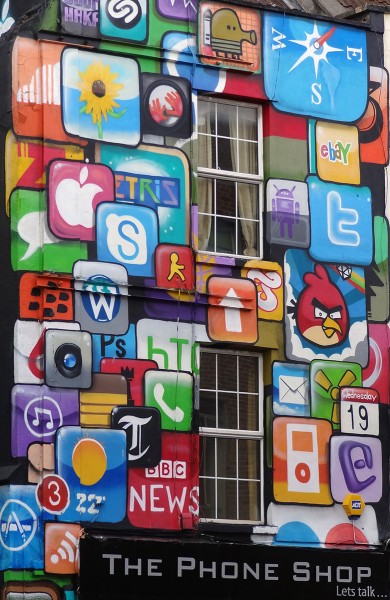 examine converging media services – offered over different platforms, or as a ‘bundle’ by the same operator. For example, telecoms services are increasingly sold to consumers in the form of bundles, sometimes with broadcasting content; this can offer consumer benefits, but may also present risks to competition.
examine converging media services – offered over different platforms, or as a ‘bundle’ by the same operator. For example, telecoms services are increasingly sold to consumers in the form of bundles, sometimes with broadcasting content; this can offer consumer benefits, but may also present risks to competition.
One particular concern appears to be BT’s internet broadband network, Openreach. This follows complaints from competitors such as BSkyB who pay to use BT’s network. Their concerns include long installation times for their customers and BT’s lack of investment in the network. One possibility being considered is breaking up BT with the forced sale of its broadband network.
It will be fascinating to see how these communications markets develop over time.
BT takeover of EE given provisional clearance by competition watchdog The Guardian, Jasper Jackson (28/10/15)
Ofcom casts doubt on O2/Three merger BBC News, Chris Johnston (08/10/15)
BT and Openreach broadband service could be split in Ofcom review The Guardian, John Plunkett (16/07/15)
Questions
- What are the key features of communications markets? Explain how these markets have developed over the last few decades.
- What are the pros and cons for consumers of being able to buy a quad-play bundle of services?
- How do you think firms that are currently focused on providing mobile phone services will need to change their strategies in the future?
- Why is BT in a powerful position as one of the only owners of a broadband network?
- Instead of forcing BT to sell its broadband network, what other solutions might there be?
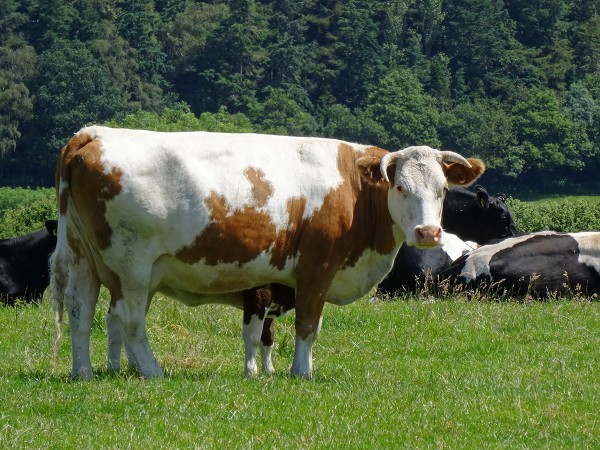 Most of us will have milk in our fridges – it’s a basic product consumed by the majority of people on a daily basis and hence a common feature of most shopping trolleys. As we saw in the post Got milk?, the low price of milk has been causing problems for farmers. This has caused one Morrisons store to take a different approach.
Most of us will have milk in our fridges – it’s a basic product consumed by the majority of people on a daily basis and hence a common feature of most shopping trolleys. As we saw in the post Got milk?, the low price of milk has been causing problems for farmers. This has caused one Morrisons store to take a different approach.
In the increasingly globalised world, British dairy farmers are no longer competing against each other. The global market place means that they are now facing growing competition from abroad and in this global world, supply exceeds demand. Even in the EU, the member states in 2015 are exceeding the milk production levels from 2014. In many markets, we wouldn’t be so concerned about production (or supply) rising, as demand can keep pace. However, in the market for milk, it’s not a product that you consume (that much) more of as your income rises. So, as the world gets richer, demand for milk is not increasing at the same pace as supply – demand in China has collapsed. This means that prices are being forced down. Adding to this global market place, we saw the European Union remove its quotas on milk production, thus boosting supply and Russian bans on imports.
The farmers themselves are in a tricky situation. They are often the small players in the supply chain, with prices being forced down by customers, supermarkets and milk processors. AHDB Dairy, the trade body, says that the average price of milk has decreased to just 23.66p per litre. According to leading industry experts this is well below the costs of production, suggested to be closer to 30p per litre. If these figures are even close to being accurate, then clearly dairy farmers’ costs of production per litre are no longer covered by the price they receive. Every litre of milk produced represents a loss.
The price that supermarkets pay to farmers for milk does vary, with some such as Marks and Spencer and Tesco ensuring that they pay farmers a price above cost. However, Morrisons in Bradford has adopted a new strategy and brand. 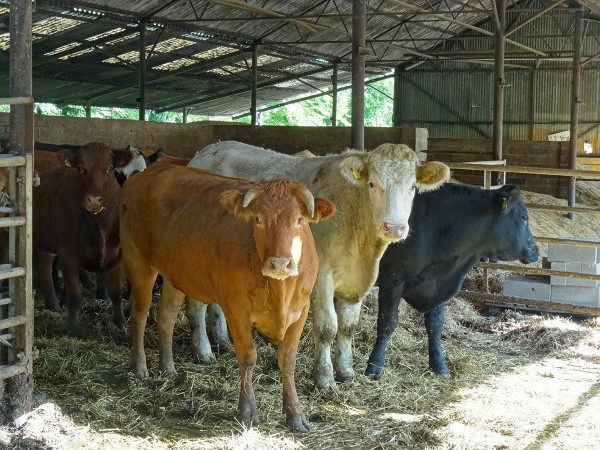 Their new milk brand ‘Morrisons Milk for Farmers’ has been launched at a 23p price rise for every four pint bottle. The catch: they will become the first UK retailer where the 23p price hike goes directly to farmers. This represents 10 pence per litre of milk going directly back to the farmers that produce it. This is a bold strategy, but data and surveys do suggest a willingness to pay more from customers, if it means that dairy farmers get a fairer deal. The protests we have seen across the country have certainly helped to generate interest and created awareness of the difficulties that many farmers are facing. Rob Harrison from the NFU said:
Their new milk brand ‘Morrisons Milk for Farmers’ has been launched at a 23p price rise for every four pint bottle. The catch: they will become the first UK retailer where the 23p price hike goes directly to farmers. This represents 10 pence per litre of milk going directly back to the farmers that produce it. This is a bold strategy, but data and surveys do suggest a willingness to pay more from customers, if it means that dairy farmers get a fairer deal. The protests we have seen across the country have certainly helped to generate interest and created awareness of the difficulties that many farmers are facing. Rob Harrison from the NFU said:
“We are pleased that Morrisons has acknowledged the desperate situation that many dairy farmers still find themselves in and recognise that retailers have a big role to play in, helping customers to support the UK dairy sector…
…Research from Mintel revealed over half of people who drink cows milk, would be prepared to pay more than £1 for a four-pint bottle of milk, as long as it is dairy farmers that benefit. This new initiative will enable them to do just that. The 10p a litre extra will go directly back into the dairy sector will make a difference on farm.”
The interesting thing will be to observe the impact on sales following this 23p price rise. We would normally expect customers to look for the cheaper substitutes, but evidence does suggest that British consumers are willing to pay the price premium if it means helping British farmers. A similar strategy adopted for British Cheddar Cheese proved fruitful and over the coming weeks, we will see if the average consumer is willing to pay directly the dairy farmers. The following articles consider this topic.
Morrisons milk for farmers brand goes nationwide at £1.12 for four pints The Grocer, Carina Perkins (12/10/15)
Morrisons to create new milk brand for farmers BBC News (11/10/15)
Milk price row: farming union leaders meet Morrisons bosses The Guardian, Graham Ruddick (11/10/15)
Morrisons to sell new ‘Milk for farmers’ brand to support British dairy producers Independent, Loulla-Mae Eleftheriou-Smith (11/8/15)
Government to give one-off milk payment for dairy farmers as Morrisons launches premium milk brand City A.M., Catherine Neilan (12/10/15)
New Morrisons milk brand pays farmers more The Yorkshire Post (12/10/15)
Questions
- Using demand and supply analysis, explain which factors have caused the price of milk to fall.
- When incomes rise, the demand for milk does not really change. What does this suggest about the income elasticity of demand for milk and the type of product that it is?
- If prices rise and sales also rise, does this suggest that British milk has an upward sloping demand curve?
- If we do see little effect on the demand for milk following Morrisons 23p price rise, what conclusion can we come to about the price elasticity of demand?
- Why do supermarkets and milk processors have the power to force down prices paid to dairy farmers?
- What type of market structure do you think dairy farmers compete in?
- If dairy farmers are unable to sell a litre of milk for a higher price than it costs to produce, is it a sensible strategy for them to remain in the market?
 German Engineering has dominated for decades and is seen as the pinnacle of quality and the key to manufacturing long-lasting products. But are long-lasting products a good strategy for a company? If products break quickly, customers need to replace them and this encourages more spending. But does this encourage customers to switch to other suppliers? Instead, do high quality products that don’t require replacement but demand a higher price offset this lack of repeat custom?
German Engineering has dominated for decades and is seen as the pinnacle of quality and the key to manufacturing long-lasting products. But are long-lasting products a good strategy for a company? If products break quickly, customers need to replace them and this encourages more spending. But does this encourage customers to switch to other suppliers? Instead, do high quality products that don’t require replacement but demand a higher price offset this lack of repeat custom?
Markus Miele is the Chief Executive of Miele, the German domestic appliance manufacturer and he takes a personal interest in his products and customers. Typical appliances from Miele can cost up to twice as much as similar appliances from other companies and yet this company is going from strength to strength. Rather than selling products that need frequent replacements, Miele is proud of its strategy to retain customers by selling products at a very high price, knowing that they will last for years. Customers appear equally willing to pay this high price for big consumer durables and their long-lasting nature is clearly encouraging its customers to buy other products too. This strategy has been so successful that other big companies are now targeting these customers. Anthony Williams, from GfK said:
“Evidence suggests manufacturers are putting in money to ensure good build quality…There are so many standards that now have to be adhered to, particularly for hi-tech products, by the nature of the product they have to make sure the [manufacturing] environment is very carefully monitored.”
The following article from BBC News considers the market for domestic appliances and the role of durability.
Can you charge double and still keep your customers coming back? BBC News, Lucy Hooker (2/10/15)
Questions
- How important is the concept of price elasticity of demand in determining a company’s strategy?
- If other firms are targeting a similar strategy to that of Miele, what might this mean for prices?
- How does the brand ‘made in Germany’ affect the demand for a product? Is there imperfect information here?
- With increase competition, companies such as Miele may be pressured into moving into cheaper production markets. How would this affect the company?
- Will the recent scandal at VW have a negative impact on companies such as Miele who rely on the ‘brand Germany’?
 In the year to June 2014, Qantas, the Australian airline, posted record losses of $2.8 billion. The airline was seen to be in some serious trouble and engaged in various cost-cutting measures. This, together with help from falling oil prices appears to have reversed this company’s fortunes. It posted profits of $557 million in the year to the end of June 2015.
In the year to June 2014, Qantas, the Australian airline, posted record losses of $2.8 billion. The airline was seen to be in some serious trouble and engaged in various cost-cutting measures. This, together with help from falling oil prices appears to have reversed this company’s fortunes. It posted profits of $557 million in the year to the end of June 2015.
The airline industry was hit by the financial crisis and subsequent worldwide recession. Holidays are a luxury item, such that when incomes are rising, there is a greater demand for travel abroad. Conversely, when incomes fall (as we see in a recession) demand will fall and this can hurt the revenues and profits of airlines such as Qantas.  Qantas, in particular, had been struggling with a high degree of competition from other airlines, who are also competing on key long-haul routes, for example Emirates, Etihad and Singapore. Further competition came at home from Virgin Australia, who had significant backing from other large airlines and Qantas found itself unable to compete with such low prices and restrictions on foreign ownership.
Qantas, in particular, had been struggling with a high degree of competition from other airlines, who are also competing on key long-haul routes, for example Emirates, Etihad and Singapore. Further competition came at home from Virgin Australia, who had significant backing from other large airlines and Qantas found itself unable to compete with such low prices and restrictions on foreign ownership.
However, with significant layoffs, cancelling some unprofitable routes and various other cost-cutting measures, Qantas will return $505 million of profits to its shareholders and will purchase 8 Boeing 787-9 Dreamliners. This will certainly boost confidence in the company and its Chief Executive, Alan Joyce’s comments may well add to this. He said:
“We are halfway through the biggest and fastest transformation in our history … Without that transformation, we would not be reporting this strong profit, recommencing shareholder returns, or announcing our ultra-efficient Dreamliner fleet for Qantas International.”
Although the investment in so many new planes is a large outlay, it is expected that they will improve the efficiency of its fleet, reducing its fuel bill significantly, especially over its longest routes. As these profit figures only represent a job that is half done, it will be interesting to see how Qantas fares with the recovery of the global economy.
Qantas to buy eight Boeing dreamliners after posting profit of $557m The Guardian (20/8/15)
Qantas returns to full-year profit and pledges new growth phase BBC News (20/8/15)
Qantas soars past overhaul to return to profit Wall Street Journal, Rebecca Thurlow (20/8/15)
Qantas injects another $55 million into Jetstar Japan Sydney Morning Herald, Jamie Freed (24/8/15)
Is Qantas set to keep on soaring? Sydney Morning Herald, John Collett (21/8/15)
Qantas to expand fleet after rapid profit turnaround Reuters (20/8/15)
Qantas turnaround gains altitude with swing to profit Financial Times, Jamie Smyth (20/8/15)
Questions
- Into which market structure would you place the airlines industry?
- Consider the different strategies that were adopted by Qantas and in each case, explain whether it would have had an impact on the firm’s costs or revenues.
- Why was Virgin Australia proving to be such fierce competition for Qantas?
- The Wall Street Journal Article refers to Qantas finding it difficult ‘to attract a White Knight’. What is meant by a White Knight?
- What has been the impact of falling global oil prices on the airline industry? Use a diagram to explain your answer.
 Pubs are closing down in the UK at the rate of 29 per week. The total number has fallen from 67,000 in 1982 to approximately 52,000 this year. In response to this decline the government has recently announced some changes to the way the relationship between pub owners and their tenants are regulated.
Pubs are closing down in the UK at the rate of 29 per week. The total number has fallen from 67,000 in 1982 to approximately 52,000 this year. In response to this decline the government has recently announced some changes to the way the relationship between pub owners and their tenants are regulated. The beer tie between the pubs and the big national breweries might have disappeared but the tied lease arrangement still exists. Instead of being tied to national brewers, many publicans are tied to either smaller regional breweries, such as Everards and Adnams, or another type of business – the pub company known as ‘pubcos’. Some of the larger pubcos include Enterprise Inns, Punch Taverns, Mitchells&Butlers and JD Weatherspoon. They negotiate deals with the breweries and then supply the beer to their pubs.
The beer tie between the pubs and the big national breweries might have disappeared but the tied lease arrangement still exists. Instead of being tied to national brewers, many publicans are tied to either smaller regional breweries, such as Everards and Adnams, or another type of business – the pub company known as ‘pubcos’. Some of the larger pubcos include Enterprise Inns, Punch Taverns, Mitchells&Butlers and JD Weatherspoon. They negotiate deals with the breweries and then supply the beer to their pubs.







